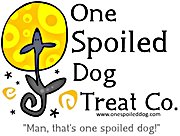Shedding is a normal part of life for most dogs, but for many pet owners, it can sometimes feel like a never-ending battle. While you cannot completely stop your dog from shedding, you can manage it with the right care, grooming, and diet. Knowing why dogs shed and how to control it will help keep your home cleaner and your dog more comfortable. Let’s dive into some of the best ways to manage shedding and make life easier for you and your furry friend.
1. Understand Why Dogs Shed
Before you tackle shedding, it is helpful to understand why it happens. Dogs shed to get rid of old or damaged hair. The amount they shed often depends on their breed, the time of year, and their overall health.
- Seasonal Shedding: Many breeds shed more heavily during the spring and fall as they transition between winter and summer coats.
- Breed-Specific Shedding: Some dogs, like Huskies and Golden Retrievers, are naturally heavy shedders. Others, such as Poodles and Dachshunds, shed very little.
- Health-Related Shedding: Issues like allergies, stress, poor nutrition, or medical conditions can cause your dog to shed more than normal.
2. Brush Your Dog Regularly
Brushing is one of the easiest and most effective ways to keep shedding under control. Regular brushing helps remove loose fur, spreads natural oils across the coat, and keeps the skin healthy.
Choosing the Right Brush:
- Short-haired dogs (like Boxers or Beagles) do well with a rubber curry brush or a soft bristle brush.
- Medium-haired dogs (like Labradors and Corgis) benefit from a slicker brush or a de-shedding tool.
- Long-haired dogs (such as Golden Retrievers and Collies) need a pin brush and a metal comb to prevent mats and tangles.
- Double-coated breeds (like Huskies and German Shepherds) require an undercoat rake to help remove loose fur from their thick underlayers.
Aim to brush your dog daily or at least several times a week, depending on how much they shed.
3. Maintain a Healthy Diet
A dog’s coat is often a reflection of their overall health. Feeding your dog a nutritious, well-balanced diet can make a big difference in reducing shedding.
- High-Quality Protein: Since hair is made mostly of protein, diets rich in lean meats, fish, and eggs help keep coats strong and shiny.
- Omega-3 and Omega-6 Fatty Acids: Found in fish oil, flaxseed, and certain dog foods, these fats can reduce shedding and improve skin health.
- Essential Vitamins and Minerals: Nutrients like Vitamin E, biotin, and zinc support a healthy coat.
- Proper Hydration: Always make sure your dog has access to fresh water to help maintain healthy skin and reduce dryness.
If you notice heavy shedding, it might be worth talking to your vet about upgrading your dog’s food or adding supplements.
4. Bathe Your Dog the Right Way
Bathing your dog helps wash away loose fur and keeps the coat clean, but bathing too often can actually dry out the skin and worsen shedding.
Bathing Tips:
- Use a gentle, dog-specific shampoo that contains moisturizing ingredients like oatmeal or aloe vera.
- Avoid using human shampoos, which can strip your dog’s natural oils and cause skin problems.
- Rinse thoroughly to remove all shampoo residue, which can irritate the skin if left behind.
- Consider using de-shedding shampoos and conditioners for dogs that shed heavily.
Most dogs do well with a bath every four to six weeks, but some with oilier coats might need them more frequently.
5. Keep Your Home Clean
Even with the best grooming routine, some loose hair will still find its way around your home. A few smart cleaning habits can make it much easier to manage.
- Use a vacuum cleaner with a pet hair attachment to easily remove fur from carpets, rugs, and upholstery.
- Keep a lint roller handy for quick cleanups on clothing and furniture.
- Wash your dog’s bedding regularly to minimize fur buildup.
- An air purifier can also help trap pet dander and loose hairs in the air.
6. Watch for Health Issues
Sometimes excessive shedding can signal an underlying health problem. If your dog is losing more fur than normal or has bald patches, it is important to get to the root of the issue.
Common causes include:
- Allergies: Dogs can develop food or environmental allergies that cause them to shed excessively.
- Parasites: Fleas, ticks, and mites can irritate the skin and cause hair loss.
- Hormonal Imbalances: Conditions like hypothyroidism or Cushing’s disease can lead to abnormal shedding.
- Skin Infections: Bacterial or fungal infections often cause fur to fall out in patches.
If you notice any sudden changes in your dog’s coat, make an appointment with your vet.
7. Reduce Stress in Your Dog’s Life
Just like people, dogs can shed more when they are stressed. Anxiety can cause dogs to over-groom, scratch excessively, and lose fur.
Ways to help reduce stress include:
- Providing daily exercise and playtime to burn off energy and keep them mentally stimulated.
- Sticking to a consistent routine, which helps dogs feel more secure.
- Using calming products like pheromone diffusers, anxiety wraps, or natural supplements if needed.
Final Thoughts
Shedding is a normal part of having a dog, but with a few simple strategies, you can manage it and keep your home and your dog looking their best. Regular grooming, a healthy diet, proper bathing, and attention to any underlying health concerns can make a huge difference. A little extra effort will go a long way toward keeping your dog’s coat healthy and your living space as fur-free as possible.
